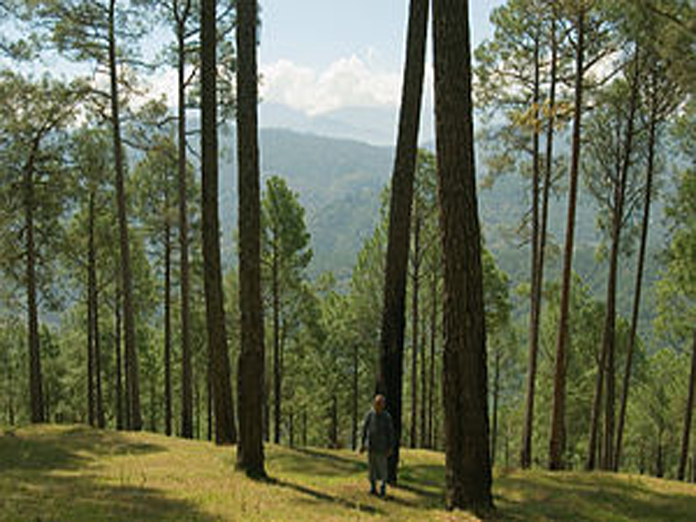Live
- They always want me to win, and now I feel lucky to have been offered a story like ‘Zebra’: Satyadev Kancharana
- ‘Democracy first, humanity first’: PM Modi in Guyana's parliament on two countries' similarities
- PKL Season 11: Telugu Titans register third straight win to top standings
- Is Pollution Contributing to Your COPD?
- NASA Unveils Underwater Robots for Exploring Jupiter's Moons
- Additional Central forces arrive in violence-hit Manipur
- AR Rahman and Saira Banu’s Divorce: Legal Insights into Common Issues in Bollywood Marriages
- 82.7 pc work completed in HPCL Rajasthan Refinery area: official
- Curfew relaxation extended in 5 Manipur districts on Friday
- Tab scam prompts Bengal govt to adopt caution over fund disbursement
Just In

As an atheist, my account is nondevotional In other words, I wanted Walking in Clouds to be a nondevotional travelmemoir on Kailash, written by an Indian, making it a unique account of the ageold journey to the lake and the mountain
Will we make it? That's the question Kavitha and her cousin, Pallu ask themselves as they trek through Himalayan pine forests and unforgiving mountains in Nepal and Tibet. Their goal is to reach Mount Kailash and Lake Manasarovar. The two women walk to ancient monasteries, meditate on freezing slopes, dance on the foothills of Kailash and confront death in the thin mountain air. Kavitha always wanted “Walking in Clouds” to be a non-devotional travel/memoir on Kailash, a unique account of the age-old journey to the lake and the mountain.
What made you think of writing a book on your journey to the Mount Kailash and Lake Mansarovar?
Initially, I began writing about this journey as an essay about a deeply felt event in my life as this journey was unique, powerful and significant to me. But a compact essay could not fully express the beauty of the mountains, the lives of the mountain people, the Hindu and Buddhist myths, and the relationships between the travellers. To capture the poetry and the truth and beauty of the journey, I needed elbow-room; I needed a book.
Also, as I began to read other books on Kailash and Manasarovar, I realised that they are either authored by Westerners writing from an outside-in perspective, or by devout Hindus and Buddhists. Since I grew up a Hindu, Kailash and Manasarovar are essential parts of my cultural imagination and I write from that inside perspective.
As an atheist, my account is non-devotional. In other words, I wanted “Walking in Clouds” to be a non-devotional travel/memoir on Kailash, written by an Indian, making it a unique account of the age-old journey to the lake and the mountain.
How did the decision to visit these places come about?
As young girls, my cousin and a fellow traveller Pallu and I studied in Rishi Valley, a boarding school in rural Andhra Pradesh. On weekends, we would trek the surrounding hills, and the love of high places, the peacefulness of being immersed in nature came from those treks.
The journey to Kailash and Manasarovar, which we had heard of from my father’s friend who had trekked there in the 1980s, represented everything we experienced on those childhood treks. The journey to go to the lake and the mountain decades afterward was, in a sense, a way to prove to ourselves that we had not forgotten the dreams we had had as hopeful young girls, climbing those hills.
Can faith give the power to overcome difficult situations?
On my journey, I saw Tibetan pilgrims prostrating themselves on the slopes of Kailash. In the freezing wind and snow, with every step, they would fall to the hard ground and rise and fall and rise over and over. It would take them three weeks to finish.
This still fills me with wonder. I could barely walk, and here they were prostrating at every step as if every stone and piece of the dust of Kailash was sacred. Of course, it was their faith that gave them the strength, physically and mentally. Faith gives people hope and makes their fears a little lighter.
Can you share of few experiences of travelling through the region?
The first part of the journey was through Humla Valley. Both the place and culture is pristine and unique. The landscapes vary from green Himalayan pine forests to yellow and mustard terraced sloped farms, to stark brown and grey mountain tops.
The untouched quality of the place is beautiful and seductive - it is easy to forget that the beauty hides great poverty and hardship for the people who live here. For travellers through the region, it is important to be cognizant of both the beauty of the place as well as the hardships the people face.
The second part of the journey was through Tibet. In Hilsa town in Humla, there is a huge steel bridge that separates Nepal from Tibet. We crossed the bridge and immediately, we were greeted with soldiers who searched through our bags. There were cameras and air of deep suspicion. Yet, there is development here - cell phones work, roads are being laid, there are cement buildings (though they are depressingly drab) in towns and there are grocery stores that sell almost everything I wanted at the time.
In Tibet, there is a sense of always being watched, always being afraid of stepping over some line. You cannot mention the name of the Dalai Lama, you cannot carry his picture. At the end of the journey, when we returned to Nepal, I felt I could breathe just a little easier, even in the chaos of Kathmandu.

© 2024 Hyderabad Media House Limited/The Hans India. All rights reserved. Powered by hocalwire.com







